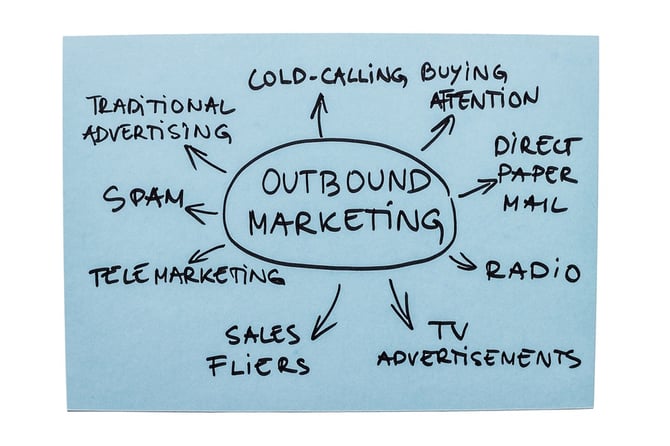Advertising is the one outbound marketing tactic that the majority of businesses still use, including those outbound marketing nay-sayers. One reason advertising is still so widely used is that it has evolved easily in the digital age. There are still traditional forms of advertising, such as print and broadcast, that have lost popularity, but can still be highly beneficial to your integrated marketing plan.
Print Advertising:
Over the last decade or so, print advertising has fallen from favor, being replaced by cheaper (and easier to track) digital advertising. On the plus side, printed media in the form of magazines are still wildly popular, and are becoming ever more segmented and targeted. The benefit of this segmentation is higher confidence that you are reaching your target market with greater efficiency than ever before. This is true of both B2C and B2B print media.
Broadcast Advertising:
Broadcast advertising refers to ads that are aired on television and radio. These media channels have also begun to fall out of favor with small businesses with limited advertising budgets. Keep in mind, though, that a successful ad campaign does not need to be run during the Super Bowl. Your local TV channels sell far more affordable ad spots, and can be highly effective depending on your target market. The same can be said for radio advertising, specifically when you are running hyper-local marketing campaigns.
Keep in mind that broadcast advertising has also made a leap into the digital arena, with websites such as Hulu and Pandora offering free services with advertisements, you should also be considering these channels if it makes sense for your target market.
Online/Digital Advertising:
Yes, we all know that online advertising has become the crown jewel of the advertising world in the digital age. Just like all forms of advertising, do your research and understand how you can best reach your target audience through targeted web site ad placements. You can also consider running search ad campaigns on search platforms such as Google, Bing and Yahoo! Social media and remarketing (also referred to as retargeting) advertising are other very popular options to consider when creating your marketing plan.
Advertising Best Practices:
- Create a “sticky” headline. Your headline has about 2 seconds to grab the reader’s attention and stop them long enough to read the rest of your ad. Your headline should be simple, yet unexpected. Also try asking a question. Made to Stick is a great book to help you think in terms of “sticky” messages and ideas for advertising, sales meetings and beyond.
- Focus on the audience. Your message is not about you, it’s about the customer. It is important to understand what it is your ideal client needs in order to reach them with your message. Our business tips from the top blog article provides best practices for understanding your ideal client.
- Focus your message. Once you have grabbed the reader’s attention, you still only have a few seconds to keep it. Focus on one message, one call to action. What is the ONE THING you want your audience to do? Stick to that one thing and do not stray from it.
- Make your offer clear. Don’t make your audience guess what it is that you want them to do after reading your ad.
- Include visuals. Include pictures or graphics that visualize your message.
- Keep it short. People don’t read like they used to. Keep your copy short and concise. Make sure you have plenty of white space to balance out the ad visually.
- Coordinate. One thing that will always help any ad campaign is to coordinate the message and branding with your other tactics. Consider running your ad campaigns in conjunction with other outbound marketing tactics, such as direct mail and/or telemarketing activities.
- Track it. Develop a method to track how your print ad is performing. This can be a bit more tricky than with digital ads. One suggestion is to include an ad-only offer (i.e. “mention this ad to receive a 20% discount).
No matter what advertising channel you decide to invest in, this outbound marketing tactic is not likely to go away anytime soon. Take careful consideration of your business needs, your budget, target market, and expectations when deciding what ad spaces to purchase for your campaign.
This is just a short list of advertising best practices. What advice and options have you explored with success to integrate advertising into your marketing plan?







